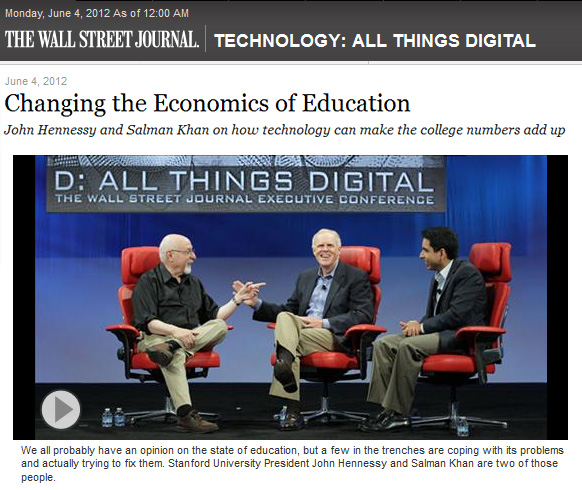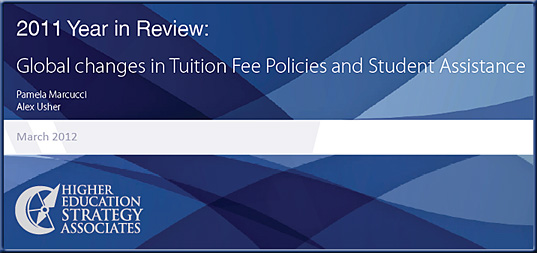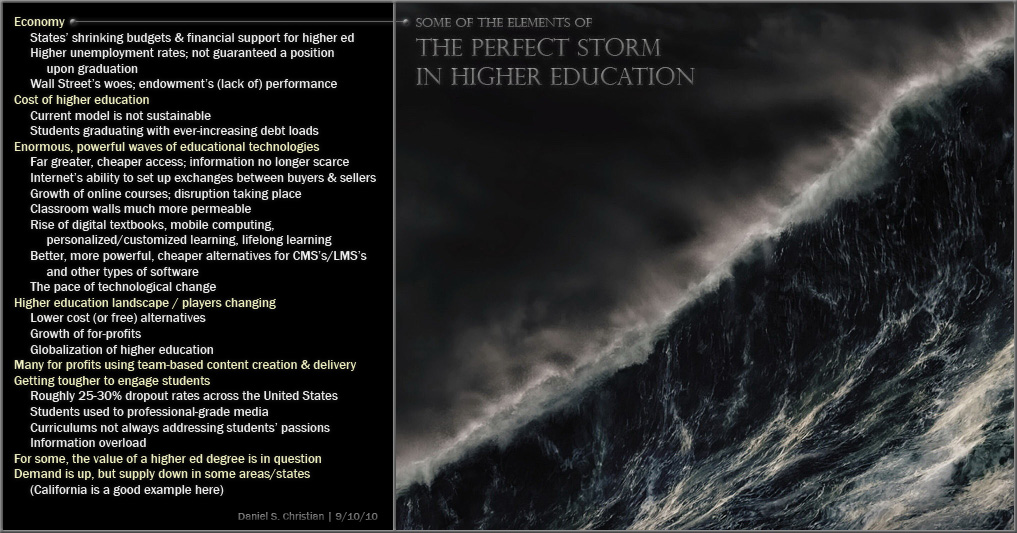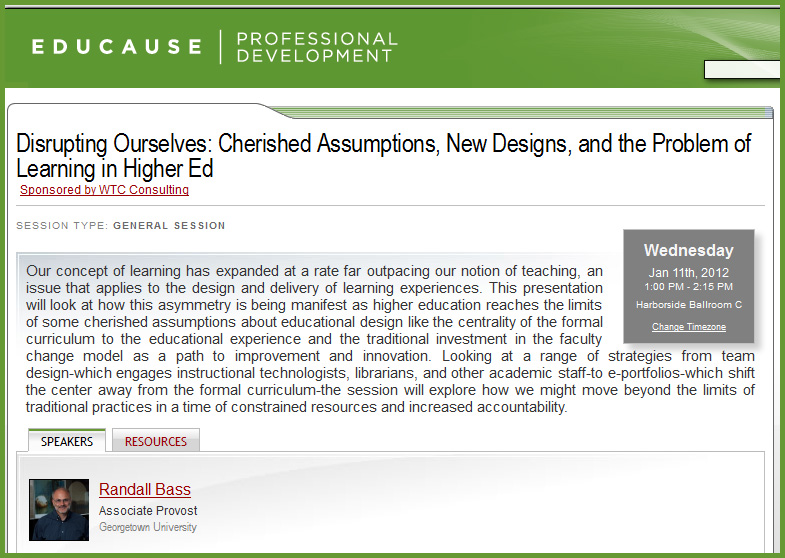Excerpt:
Is there anything to be done about the rising price of higher education? That was the question posed to John Hennessy, president of Stanford University, and Salman Khan, founder of Khan Academy, a nonprofit online-learning organization. They sat down with The Wall Street Journal’s Walt Mossberg to discuss how technology might be part of the solution.
Here are edited excerpts of their conversation.
Addendum on 6/7/12:
- D10: Stanford, Khan Academy, and the future of higher ed — from techhive.com by Jason Snell
Excerpt:
Though the crushing cost of college education wasn’t a major topic of Khan and Hennessy’s conversation with D10 co-host Walt Mossberg, it’s certainly a major cause of anxiety for parents. But most of the time, the conversation dwelled on the simple issue that technology is going to radically transform education—and right now everyone’s trying to figure out how to manage that change. “There’s a tsunami coming,” Hennessy said. “I don’t know how it’s going to break, but my goal is to try to surf it, not just stand there.” At its simplest form, technology needs to find ways to make education more efficient. That means serving more students, but also teaching them more effectively.


















